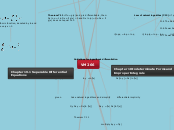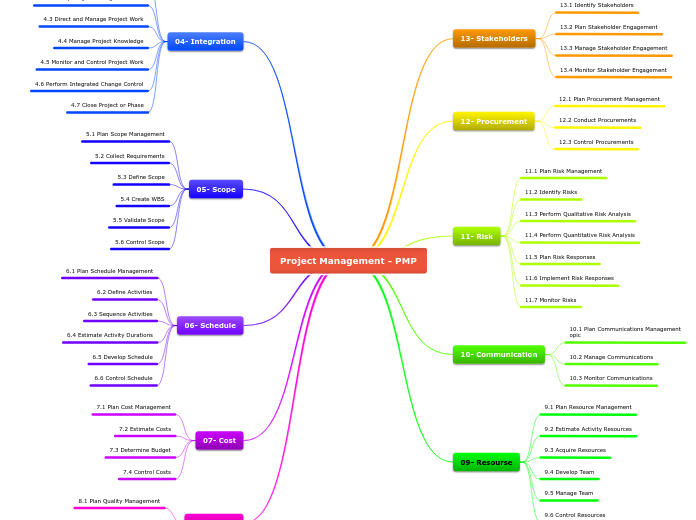Chapter 19.1 Seperable Differential Equations
VM266
Chapter 12: Toics from Analytic Geometry
12.4 Rotation of axes
A summary of rotation of axes
12.3 Hyperbolas
x^2/a^2 - y^2/b^2 = 1 is a hyperbola with vertices (+-a,0).
A hyperbola is the set of all points in a plne, the difference of whose distances from two fixed points in the plane (the foci) is a positive constant.
12.1 Ellipses
Graph of the equation is x^2/a^2 + y^2/b^2 = 1
An ellipse is the set of all points in a plane, the sum of whose distances from two fixed points (the foci ) in the plane is constant
12.1 Parabolas
For an upward or downward graph look at the equation y = ax^2 + bx_c
A parabola is the set of all points in a plane equidistant from a fixed point F (the focus) and a fixed line l (the directrix) in the plane.
Chapter 7 Logarithmic and Exponential
Section 7.4
Theorem 7.25
integral csc u du = ln |csc u - cot u| + C
intergral sec u du = ln |sec u + tan u| + C
integral cot(u) du = log(sin(u))+constant
integral tan(u) du = -log(cos(u))+constant
integral e^u du = e^u+constant is if u = g(x) and g is differentiable
integral 1/u du = log(u)+constant is if u = g(x) =/ 0 and g is differentiable
Section 7.3
Theorem 7.22 states that if u = g(x) is differentiable, then Dx e^u = e^u Dx u
Theorem 7.21 states that Dx e^x = e^x
Theorem 7.20
iii) (e^p)^r = e^pr
ii) e^p / e^q = e^p-q
i) (e^p)(e^q) = e^p+q
Theorem 7.19
ii) e^ ln x = x for every x >0
i) ln e^x = x for every x
If x is any real number, then e^x = y if and only if ln y =x
The letter e denotes the positive real number such that ln e =1
Natural exponential function, denoted by exp, is the inverse of the natural logarithmic function.
Theorem 7.14 states that for every real number x there corresponds exactly one positive real number y such that ln y =x
Section 7.2
Guidelines for logarithmic differentiation
Dx y = f(x) Dx [ln f(x)]
multiply by y = f(x)
1/y Dx y = Dx[ln f(x)]
Theorem 7.11
Dx[ln y] = Dx [ln f(x)]
differentiate implicity
ln y =ln f(x)
take natural logarithms and simplify
1) y=f(x)
given
Law of natural logarithm (7.12): if p > 0 and >0, then :
iii)ln p^r = r ln p for every ration number r
ii) ln p/q = ln p - ln q
i)ln pq = ln p + ln q
Theorem 7.11 : If u = g(x) and g is differentiable, then: Dx ln u = 1/u Dx u if g(x) > 0 and Dx ln |u| = 1/u Dx u if g(x) does not equal to 0
The natural logarithmic function, denoted by ln and the function is for every x > 0
7.1
Theorem 7.8 states that if g is the inverse function of a differentiable function f and if f'(g(x)) does not equal 0 then g'(x)=(1/f'(g(x)))
Theorem 7.7 states that if a differentiable function f has an inverse function g=f^-1 and if f'(g(c)) does not equal 0, then g is differentiable at c and g'(c) = (1/f'(g(c)))
Theorem7.6 states that if f is continuous and increasing on [a,b], then f has an inverse function f^-1 that is continuous and increasing on [f(a),f(b)].
Guidlines for finding f(inverse) in simple cases
3)Verify the two conditions: f^-1(f(f(x))=x and f(f^-1(x))=x for every x in domains of f and f^-1, respectively.
2)Solve the equation y=f(x) for x in terms of y, obtaining an equation of the form x=f(inverse)(y)
1)Verify that f is a one-to-one function(or that f is increasing or is decreasing) throughout its domain.
Domain of f^-1 = range of f and range of f^-1 = domain of f
Theorem 7.3 : g(f(x))=x for every x in D and f(g(y)) = y for every y in R.
Inverse function is a one-to-one function with domain D and range R with a condition that y=f(x) if and only x=g(y).
One-to-one function is a function f domain D and rage R whenever a does not equal to b in D, then f(a) does not equal to f(b) in R.
Chapter 8 Inverse Trigonometric and Hyperbolic Functions
8.4 Inverse Hyperbolic Functions
Definitions and equations
8.3 Hyperbolic Functions
Def.Eq.
8.2 Derivatives and Integrals
∫1/usqrt(u^2-a^2)du=(1/a)arcsec(u/a)+C
∫1/(a^2+u^2)du=(1/a)arctan(u/a)+C
∫1/sqrt(a^2-u^2)du = arcsin (u/a) + C
dx sec^-1u = 1/usqrt(u^2-1)dxu
dxtan^-1u= 1/(1+u^2)dxu
dxcos^-1(u)=-1/sqt(1-u^2)dxu
dx sin-^1(u) = 1/sqrt(1-u^2)dxu
8.1 Inverse Trigonometric Functions
arccosecant y = arccsc x x = csc y x ≤ −1 or 1 ≤ x −π/2 ≤ y < 0 or 0 < y ≤ π/2
arcsecant y = arcsec x x = sec y x ≤ −1 or 1 ≤ x 0 ≤ y < π/2 or π/2 < y ≤ π
arccotangent y = arccot x x = cot y all real numbers 0 < y < π
arctangent y = arctan x x = tan y all real numbers −π/2 < y < π/2
arccosine y = arccos x x = cos y −1 ≤ x ≤ 1 0 ≤ y ≤ π
arcsine y = arcsin x x = sin y −1 ≤ x ≤ 1 −π/2 ≤ y ≤ π/2
Chapter 13: Plane Curves and Polar Coordinates
13.5 Polar Equations of Conics
Let F be a fixed point and l a fixed line in a plane. The set of all points P in the plane, such that the ration d(P,F)/d(P,Q) is a positive constant e ith d(P,Q) the distance from P to l, is a conic section. The conic is aparaaola if e =1, an ellipse if 0
13.4 Integrals in polar coordinates
http://www.youtube.com/watch?v=I2Z6K_g5kpc
Guidelines for finding the area of an R_theta region
1) sketch the region, leabeling the graph of r = f(theta). Find the smallest value theta = alpha and the largest value theta = beta for points in (r, theta) in the region.
2) Sketch a typical circular sector and label its central angle dtheta
3)express the area of the setro in guideline as 2 1/2 r^2dtheta.
4) apply the limit of sums operator inegral from alpha to beta to the expression in guideline 3 and evaluate the integral
13.3 Polar Coordinates
The rectangular coordinates (x,y) and polar coordinates (r,theta) of a point P are related as follows: i) x = rcos theta
13.2 Tangent Lines and Arc Length
Summary of this
https://www.cs.drexel.edu/classes/Calculus/MATH123_Spring03/lecture22.pdf
13.1 Plane Curves
Let C be the curve consisting of all ordered pairs (f(t),g(t)), where f and g are continuous on an interval I. The equations x =f(t), y =g(t) for t in I, are parametric equations for c with paramet t
A plane curve is a set c of ordered pair(f(t),g(t)), where f and g are continuous on an interval I
Chapter 9 Techniques of Integrations
9.6 Miscellaneous Substitions
If an integrand is a rational expression in sinx and cosx, the following substitutions will produce a rational expression in u: sinx = 2u/(1+u^2), cosx= (1-u^2)/(1+u^2), dx = 2/(1+u^2)du, where u = tan(x/2)
9.5 Integrals Involving Quadratic Expressions
9.4 Integrals of Ratinoal Functions
Guidelines for integrals of rational functions
9.3 Trigonometric Substitutions
Expressions in Integrand
sqrt(x^2) - a^2
x = a sec theta
sqrt(a^2 + x^2)
x = a tan theta
sqrt(a^2 - x^2)
x = a sin theta
9.2 Trigonometric Integrals
Trigonometric Integral Guildlines
9.1 Integration by Parts
If u = f(x) and v = g(x) and if f' and g' are continuous, then ∫u dv = uv - ∫ v du
Chapter 10 Indeterminate Forms and Improper Integrals
10.4 Integrals with Discontinuous Integrands
Subtopic
10.3 Integrals with Infinites limits of Integration
Explanation in having Improper integrals with inifinite limits
10.2 Other Indeterminate Forms
Guidelines for Investigating the indeterminate forms.
3) Investigate lin ln y = lim x -> c [g(x) ln f(x)] and conclude the conditions
2) Take natural logarithms in guideline 1: lny = ln f(x) ^g(x) = g(x) ln f(x)
1) Let y = f(x) ^g(x)
Having a zero x infinity
10.1 The Indeterminate Forms 0/0 and inf/inf
Cauchy's Formula and L’Hospital’s Rule
Chapter 11 Inifinite Series
11.7 Power Series Representations of Functions
11.6 Power Series
11.4 The Ratio and Root Tests
Ratio and Root test
11.5 Alternating Series and Absolute Convergence
A series in which successive terms have opposite signs is called an alternating series.
The Alternating Series Test (Leibniz's Theorem)
This test is the sufficient convergence test. It's also known as the Leibniz's Theorem for alternating series.
Let {an} be a sequence of positive numbers such that
1. an+1 < an for all n;
2. .
Then the alternating series and both converge.
Absolute and Conditional Convergence
A series is absolutely convergent, if the series is convergent.
If the series is absolutely convergent then it is (just) convergent. The converse of this statement is false.
A series is called conditionally convergent, if the series is convergent but is not absolutely convergent.
11.3 Positive- Term Series
Definitions and Theorems
11.2 Convergent or Divergent Series
Theorems and Definitions
Definitions: Convergent and divergent series
1. A series is an infinite sum, written . It doesn’t have to start at k = 0.
2. The nth partial sum of the series is
3. The series converges to a number L means: . In other words, for n large enough, is the same as L to any number of decimal places you like.
4. If converges to L, we sometimes write = L . In other words, the sum is as close to L as you want if you take enough terms.
5. Sometimes there is no number L with . In such a case we say that the series diverges. This could happen because the partial sums bounce around, or, in the case of a series like , because the numbers get bigger and bigger without bound.
6. Types of series:
a) is a positive term series means that for all k.
b) An alternating series has terms that switch signs. Every alternating series can be written as either or as where for all k.
c) A series is absolutely convergent if the positive term series is convergent.
If a series is absolutely convergent, it is convergent. The reverse might not be true. For example, if , then converges but is not absolute convergent, since = diverges. There is a name for this situation, as follows:
d) A series is conditionally convergent if converges but diverges.
Some basic tips for doing power series problems
1. You MUST start each convergence question with the kth term test: The series is divergent if a) does not exist or b) is not 0. If that limit is 0, you must continue with other tests. So you need to know stuff about limits, as follows.
i) exponential functions grow faster than polynomials. and
ii) factorials grow faster than exponential functions: and
iii) limits pull inside functions: .
11.1 Sequences
The notation for a sequence is as follows.
If f:A→S is a sequence, then a symbol, for example "a", is chosen to represent elements of this sequence.
Then for each k∈A, f(k) is denoted ak, and f itself is denoted ⟨ak⟩k∈A.
Other types of brackets may be encountered, eg. (ak)k∈A and {ak}k∈A.
The latter is discouraged because of the implication that the order of the terms does not matter.
Any expression can be used to denote the domain of f in place of k∈A.
The set A is usually understood to be the set {1,2,3,…,n}.
If this is the case, then it is usual to write ⟨ak⟩k∈A as ⟨ak⟩ or even as ⟨a⟩ if brevity and simplicity improve clarity.
A sequence is a function f whose domain is the set of positive integrers









